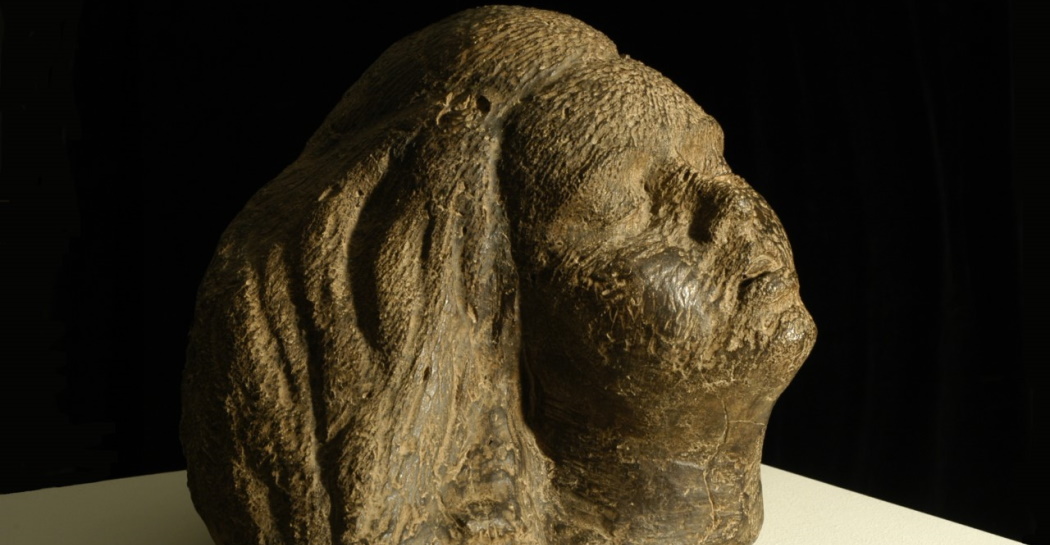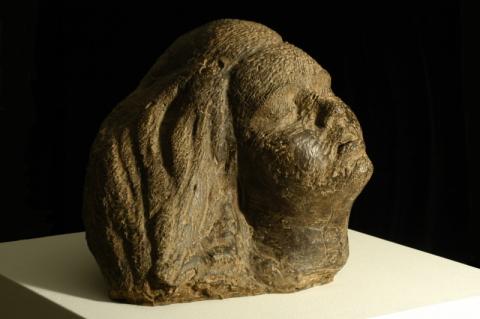The Artwork of the Month of the Museo della Scuola Romana - May 2022
May 2022
Antonietta Raphaël
(Kaunas, 1895 - Rome, 1975)
Miriam che dorme, bronze, early 2000s, from plaster worked in 1933
Bronze, 34x45x40 cm
Inv. MSRo 18

This sculpture represents the face of the artist's daughter as she sleeps. The closed eyes, the sleepy expression and the dishevelled braid convey the innocence of childhood and Raphaël's amazement at her motherhood.
The theme of motherhood is central to the artist's work, who looks to his daughters as an inexhaustible source of images. The intimate, family dimension frequently emerges in her works, in which she often portrays not only her three daughters but also her husband, the painter Mario Mafai, with whom she formed an artistic partnership. Perhaps it was her confrontation with Mafai that led to a conflictual relationship with the medium of painting; in 1931 she wrote to him: "if you are close I have no right to paint". Therefore, in those years, she began to attend an evening school of sculpture while in Paris, discovering there a more congenial dimension.
As her friend and artist Katy Castellucci would say, "Antonietta [...] has finally found the language to express herself".
The plaster from which this bronze version of the work was cast was made in 1933 and is the artist's first sculptural proof. Initially it included a bust, but it was only later that Raphaël decided to give the work its present form, giving the child's dreamy face particular prominence.
As Miriam herself recounts, 'I have a memory of my mother making my portrait of Miriam sleeping [...]; she demanded that I stay still, silent, with my eyes closed (unlike my father, who when I was posing for him allowed me to read and talk)'.
The treatment of the work's surfaces is particularly sensitive to luminous values and leaves the completed work visible, including errors and regrets, eschewing a classic smoothness. The artist carries out in-depth research into materials, as can be seen in the porphyry version of the same subject. Miriam Sleeping demonstrates Raphaël's estrangement from the Italian sculpture of the time, and his greater affinity with the French sphere.
Antonietta Raphaël De Simon was born in Kaunas, Lithuania, in 1895. After the death of her father, a rabbi, she moved with her mother to London in 1905, where she studied theatre acting and graduated in piano at the Royal Academy. In 1924 he went to Paris and came into contact with its lively cultural and artistic environment. Shortly afterwards she moved to Rome, where she enrolled at the Academy of Fine Arts and met the painter Mario Mafai, her future husband and father of her three daughters, Miriam, Simona and Giulia (Giuditta). His role within the Roman School was fundamental and many artists were influenced by the ideas that Raphaël had reworked during his European training. Together with Mafai and Scipione, she constituted what Roberto Longhi would call the "School of Via Cavour" in which Raphaël initially established herself as a painter, a field that she would later abandon in favour of sculpture. After the promulgation of the racial laws, she hid in Genoa with her daughters. After the war, she continued to exhibit her work with continuous critical success. He died in Rome in 1975.
Back to the section > The Artwork of the Month of the Museo della Scuola Romana












































